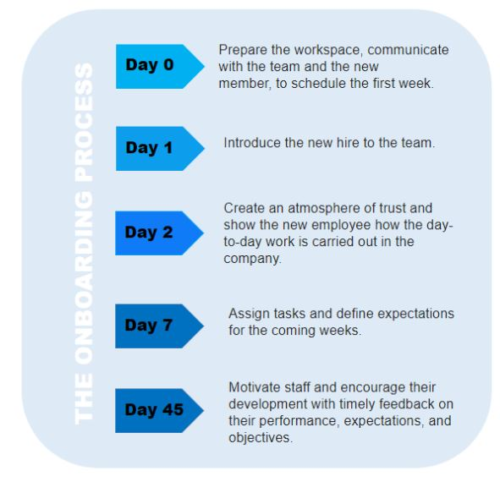Reaching Workers Around the World: Building a Global Talent Acquisition Strategy After COVID

This last year has proven that working remotely, in some form or another, is here to stay. A recent Gallup survey found that 61 percent of Americans would prefer to work from home, and companies like Microsoft, Apple, and Google have announced they will be embracing hybrid models. This large-scale embrace of remote work has opened the doors to new talent pools, allowing employers to fill the skill gaps in their workforce and build top-notch remote global teams.
To take full advantage of the benefits of remote and hybrid work models, companies need to develop solid global talent acquisition strategies. Building a global remote team poses its fair share of difficulties. Before making a plan, it is important to understand what the process entails.
Defining Talent Acquisition
It’s not uncommon for companies to confuse talent acquisition and recruiting. Talent acquisition emphasizes seeking out and acquiring specific expertise to build a skilled team that can meet company objectives. Traditional recruitment, while similar, is more preoccupied with filling positions quickly and cost-effectively.
Because of its more holistic nature, a global talent acquisition plan should include:
• Strategic planning: A global talent acquisition strategy should align with business objectives, examine workforce plans and labor markets, and evaluate global considerations. This comprehensive view will help you stay focused on the most critical details.
• Workforce analysis: Research the different segments of your workforce, the required positions within those segments, and the skills necessary for success. Making a list of non-negotiables will help you narrow down the search and satisfy company needs.
• Employer branding: Advertising your company culture, key differentiators, and reputation will help attract candidates who are interested in being part of a team like yours. That helps cement your market position and build employee retention.
• Positive candidate experience: Not everyone who applies for a position will be perfect for it. However, that doesn’t mean they won’t be great for another role down the line. Keeping the experience positive will help build your company’s reputation and keep candidates interested in future positions.
• A means of tracking progress: Hiring talent is not the end of the road. It’s important to track metrics that help you keep your talent acquisition fruitful and drive continuous improvement.
How to Deploy Your Global Talent Acquisition Strategy
The attributes outlined above are vital in developing a global talent acquisition strategy. But simply having a strategy on paper is not enough. You must also execute that strategy. Here’s how:
1. Make Your Values Clear
The new wave of employees are not only interested in compensation packages but also the corporate social responsibility (CSR) programs of their potential employers. In fact, a Cone Communications study found that 64 percent of millennials would decline a job at a company that lacks a strong CSR policy. In comparison, 83 percent would be more loyal to a company with a robust CSR program.
For employers, this means you need to make your values clear when building your global employer brand. Today’s employees expect you to take a stand on important issues like equality, diversity and inclusion, and more. Doing so will ultimately make your company more attractive in the eyes of potential candidates.
2. Structure the Onboarding Process
According to LinkedIn, 22 percent of turnover happens during an employee’s first 45 days, which means it’s imperative to get onboarding right — especially when recruiting globally. After all, your employees won’t necessarily be able to meet up with their coworkers and form the kind of relationships that lead to retention.
Instead of leaving the first 45 days up to chance, you need to craft a finely honed onboarding process that helps new hires settle in and start thriving. Here is an example of an ideal structured onboarding process:

3. Provide Training and Development Programs
According to the Association for Talent Development, companies that offer comprehensive training programs have a 218 percent higher income per employee than those that don’t. Additionally, 76 percent of employees say companies are more appealing when they offer training and development programs to their workers.
In addition to training employees in their roles, you want to give them paths to grow beyond their current jobs. Career progression is very important to today’s talent, and 70 percent of employees would leave their current employer for a company with more opportunities for career development. Being proactive about upward mobility encourages employee retention, motivation, and productivity.
So, if you want to capture the interest of top talent, you should offer training and development programs — and promote them in the hiring process.
4. Embrace the Flexibility of the New Work Era
Remote and hybrid work are now the norm rather than novelties. Many enterprise companies, such as Twitter and Slack, have given employees the choice to work remotely, and 89 percent of employees say they’d like to work remotely some or all of the time.
Offering benefits as widely desired as remote work gives your company an edge over its competitors. Moreover, it’s practically imperative to embrace flexible work arrangements when executing a global talent acquisition strategy. If you want to hire from anywhere in the world, you need to open to remote work.
5. Increase Employee Satisfaction With better Benefits
Pay isn’t everything. According to Glassdoor, 79 percent of employees would rather receive additional benefits over a pay raise. But not all benefits are equally valued — especially not when you’re recruiting globally. Benefits that are highly attractive to candidates in some areas may be wholly unnecessary in others.
When establishing what your company will offer, it’s important to research what your target candidates are interested in. This can include things like healthcare, paid family leave, shorter workweeks, and student loan assistance.
6. Stay Relevant
Change is one of life’s guarantees. Your global talent acquisition strategy can’t stay static, because the talent market certainly won’t. Make sure to stay on top of market trends, new tools, and best practices. With the world of work constantly evolving, you should always be prepared to pivot to meet talent wherever it is.
Debbie Millin is the chief operating officer and a founding member of the executive team of Globalization Partners.
Get the top recruiting news and insights delivered to your inbox every week. Sign up for the Recruiter Today newsletter.

